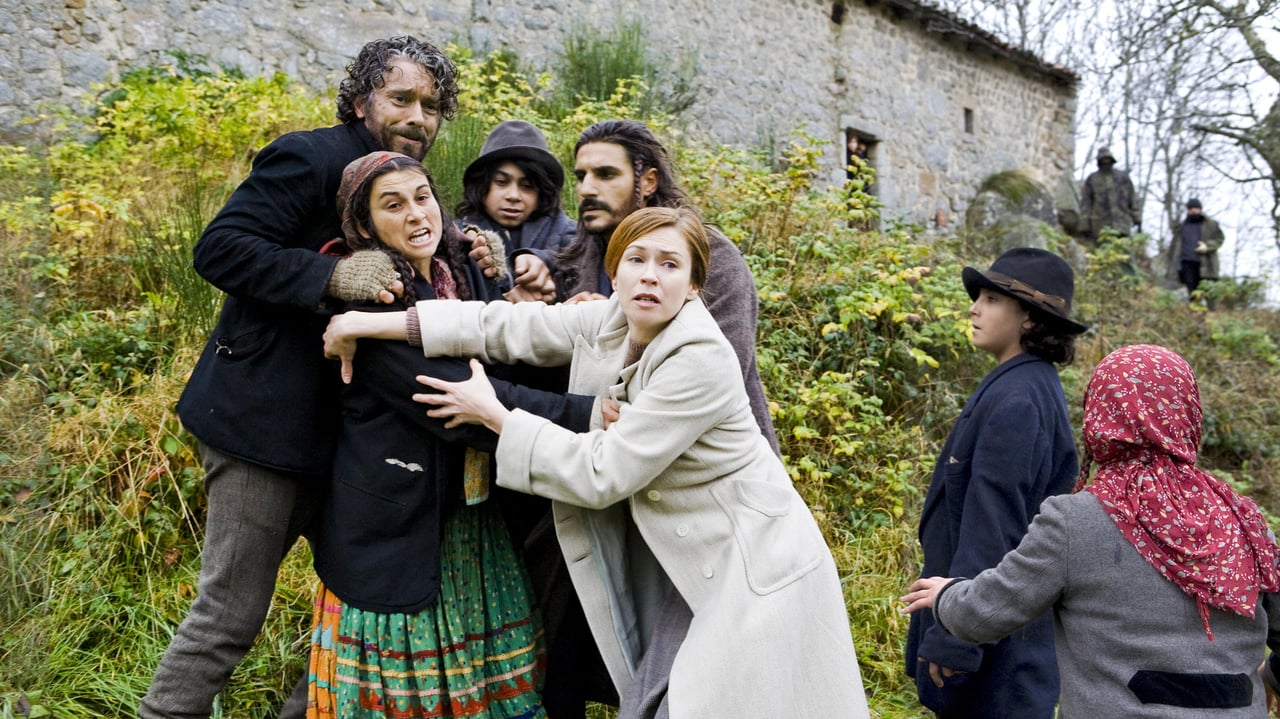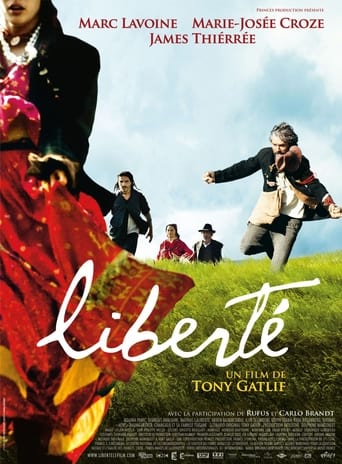



What makes it different from others?
recommended
At first rather annoying in its heavy emphasis on reenactments, this movie ultimately proves fascinating, simply because the complicated, highly dramatic tale it tells still almost defies belief.
View MoreIt is neither dumb nor smart enough to be fun, and spends way too much time with its boring human characters.
View MoreVery few films have dealt with the persecution and annihilation of the gypsies or gitanos during World War Two by Hitler and his minions. For that reason alone, this film is important. If you are looking for other films, you might check out "The Man Who Cried" with Johnny Depp.This film was a nice surprise. I expected it to be depressing, but it was not. What Gatlif managed to portray through some very nice cinematography and story development is the gypsy love of nature and the outdoors. It was beautifully done.Another theme that comes across well in this film is the gypsy love of music. They seem to have an unusual flair for music, and they use it to enrich their own lives, but also to provide an income and support themselves.As someone with a history degree, I appreciated the fact that Gatlif attempted to shed some light on a subject that few have touched. I also appreciated the cultural insights on gypsies and their lifestyle. Anyone looking for something a little different should enjoy this film.
View MoreTony Gatlif had already broached the subject of the gypsies in his earlier "Les Princes" (1983) or "Gadjo Dilo" (1998);sadly he never enjoyed commercial success in his native France,in spite of generally favorable reviews by critics .Himself a gypsy,he had to make a movie about his people during WW2 for it was also a genocide ,comparable to that of the Jews ;we learn that up to 25% of them were exterminated in concentration camps.Based on historical facts : the roundups by the French gendarmes in the occupied part of France and the story of a young resistant fighter who takes refuge in a small village where she has become a schoolteacher:what a humiliation it must be for her to have her pupils sing the notorious "Maréchal Nous Voila" (the children shout more than they sing ,perhaps on their mistress's advice)!It's no coincidence if this anthem is followed by the tune of "Le Temps Des Cerises" the revolutionary song of La Commune De Paris (1871).Ther's a sword of Damocles hanging over the band of gypsies who are camping in the small village .Not only the German soldiers ,but also the French police ;and anyway the French agree ,cause "they want to help the country get rid of that vermin" ;the gypsies in France have always been outcasts ,they were before WW2 and they still are in 2011.There are two just people in the village :the school teacher who welcomes the children in her school and the mayor who gives them a house so that they will not be arrested ;a "law" forbids nomadism in the country and the notable tries to circumvent it.It's a pity that the part of the mayor (singer Marc Lavoine ,an occasional actor ,notably in Chabrol's "L'Enfer" )and of the young teacher should be underwritten. All that concerns the gypsy rings true and of course they use their own language (there's an alternative gypsy title ,used abroad).And they make wonderful music.
View MoreFirst of all, sorry for all the details in the following review, but I guess those of you interested in this film may find them useful.Having followed Gatlif's progression as a filmmaker from the early 90s onwards - I still have his 80s works to catch -, I've been wondering for quite some time when he would tackle the Porraimos, the 'Devouring' in Nazi-occupied Europe which left 250-500.000 Sinti and Roma dead. It's a sadly neglected aspect of the Holocaust, and neglected for a reason: the stereotypes and social conditions which make Gypsies easy targets for fanaticism and slander are still very much in check, as demonstrated by the recent forceful deportations of Roma from France, Gatlif's home country. Unfortunately, Gatlif's usual strengths translate as weaknesses when it comes to the story structure such an issue calls for. His films are great when they center around music and place the characters around it (Gadjo Dilo, Latcho Drom, Swing). They are weak when the focus is on the characters proper, for Gatlif invariably attempts to create rather a tableau of images than empathy with the protagonist's dilemmas (Exiles), or, even worse, when he appeals to romanticist views of Gypsies for the sake of accessibility (Transylvania). In the case of 'Freedom', all these weaknesses come into full swing: there's next to zero character development, which results in very weak story structure. There's little music to render the admittedly great cinematography alive. The scenes of Gypsies in (French) internment camps are long, dreary and lifeless - the controversial fact that French police collaborated with the Nazi Regime, which later deported the Gypsies to death camps, is somewhat alluded to (in the character of the limping agent) but incomprehensibly so if you don't know already. This ambiguity may be explained by the fact that Sinti and Roma rarely discuss the Holocaust due to taboos in regard to the dead. It's one of the most important aspects of Roma culture and again alluded to in the scene where the Kumpania ('extended family') refuses to use a house for fear of the spirits of the dead (muló). If you are wondering why there are so little films and books dealing with the Holocaust in spite of its impact on the Roma - that would be the most important reason. This also explains the blatant anachronism to use Romanian Roma (who speak a Transylvanian dialect of Romanes) instead of French Manouche (who speak Sinti Romanes, a different language): the (Western European) Sinti were wiped out by the Nazis to an extent of about 80%, their culture was almost completely annihilated, therefore they understandably reluctant to participate in reenactments of this catastrophe. The (Eastern European) Roma were also persecuted to an appalling extent, but their social structure survived, which may allow them to enact the persecution with more confidence.Still, Gatlif himself has illustrated a much better way to deal with this silence in 'Latcho Drom', in a shot of an old woman singing a lament, with the camera just brushing over her arm - and her tattooed Auschwitz internment number. Given that the (silent) way Gipsies deal with the Holocaust is fundamentally different from that of most Jewish groups, this kind of symbolism would probably have been more appropriate and artistically successful. As it is, 'Korkoro' is still quite important being the first film by a Gypsy film maker to deal with the subject. But judged by itself, it's a failure, and not a very interesting one to watch failing.
View MoreI've seen half a dozen or so of Tony Gatlif's films and I've enjoyed them all - in fact his previous film, Transylvania, was my equal favourite cinema release of 2008. While Gatlif's work documents the way of the Roma (gypsies), the themes are universal: celebrations of music, culture, ethnicity and so on. It's the dramatic and visual way in which Gatlif portrays these elements that has much impact for me.Korkoro certainly doesn't disappoint. The visuals are beautifully rendered, and the frame is used wonderfully - sometimes with extreme close-ups, sometimes panoramic. Like Robert Guédiguian's latest film, The Army of Crime, the film is set during World War II. According to the end credits, an estimated 250,000 to 500,000 of Europe's 2 million pre-war gypsies died at the hands of the Nazis. This story follows a wandering family of 15 of those.The Germans in occupied France decreed a law forbidding the movement of itinerants and this family find themselves stranded in a town where they seasonally perform farm work, before they are imprisoned in a camp. The family has the sympathy of the town's mayor - who provides land for the family - and the local teacher, Mademoiselle Lundi (Marie-Josée Croze), who is based on the real-life resistance fighter Yvette Lundy.I love this film. Not only does it have all the trademark Gatlif traits: wild depictions of gypsy life, wild music and spurts of insanity, but its presentation of the rarely depicted and tragic part that the Roma played in WWII combine to make this a lovely story.Some of the visuals are amazing, like a sick horse and its gypsy treatment (it'll have you wondering how the hell they got animals to 'act'). The cinematography is superb. The acting is strong and Croze's role is especially beautifully understated. Well worth seeing.
View More